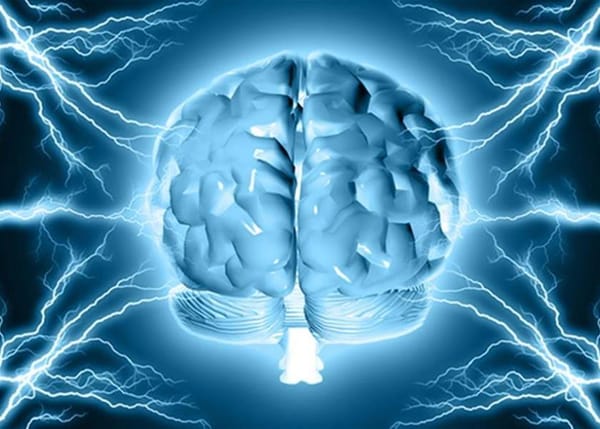Unlock Instant Relief: 6 Simple At-Home Exercises to Fix Sciatica, Neck & Shoulder Pain - From Your Local Foster City Chiropractor!
Suffering from sciatica, neck pain, or shoulder discomfort? Discover 6 powerful exercises recommended by a Foster City chiropractor to relieve pain at home. Improve posture, reduce tension, and speed up your recovery with easy-to-follow exercises. Watch the video guides now

"A lot of people ask us, ‘What can I do right now at home to feel better quicker?’ We hear you loud and clear, and we’re here to help. Whether you're struggling with Forward Head Posture (FHP), Anterior Head Carriage, Sciatica, or Pelvic Tilt, we've got some simple exercises that can help. These exercises work hand-in-hand with your chiropractic care and can speed up your healing process!"
At-Home Exercises for Forward Head Posture & Anterior Head Carriage
Forward Head Posture (FHP) and Anterior Head Carriage occur when your head shifts forward, creating a misalignment in your spine and causing discomfort in your neck and upper back. If left unaddressed, it can lead to chronic pain, poor posture, and tension headaches. The good news is, there are simple exercises you can do at home to help improve posture and relieve pain.
1. Thoracic Extension on Foam Roller
- How it helps: This exercise opens up the chest and improves the mobility of the upper back, which is essential for correcting forward head posture.
- Why it works: By stretching the thoracic spine, this exercise helps to counteract the rounded shoulders and head-forward position that often accompany FHP.
- Watch the Video: Thoracic Extension on Foam Roller
2. Chin Tucks
- How it helps: Chin tucks target the muscles in your neck and upper back to strengthen them, reducing the forward positioning of the head.
- Why it works: This exercise helps pull the head back into proper alignment, relieving strain on the neck and shoulders.
- Watch the Video: Chin Tucks
3. Neck and Shoulder Stretch (Levator Scapulae Stretch)
- How it helps: This stretch targets the levator scapulae muscle, which often tightens due to forward head posture.
- Why it works: Stretching this muscle helps reduce neck and shoulder tension, allowing the head to sit in a more neutral position.
- Watch the Video: Levator Scapulae Stretch
At-Home Exercises for Sciatica & Pelvic Tilt
Sciatica and pelvic tilt often go hand-in-hand, causing discomfort in the lower back, hips, and legs. Pelvic tilt, especially an anterior pelvic tilt, can worsen sciatic pain. Luckily, there are a few effective exercises to help reduce this discomfort and improve posture.
1. Hip Flexor Stretch
- How it helps: Tight hip flexors contribute to an anterior pelvic tilt and sciatic pain. This stretch targets the hip flexors, which are often shortened from prolonged sitting.
- Why it works: Stretching the hip flexors helps neutralize the pelvic position and alleviate sciatic pain.
- Watch the Video: Hip Flexor Stretch
2. Glute Bridge
- How it helps: The glute bridge strengthens the glutes and engages the core, helping to correct an anterior pelvic tilt and stabilize the pelvis.
- Why it works: Strengthening the glutes helps to counteract the effects of tight hip flexors and improves pelvic alignment.
- Watch the Video: Glute Bridge Exercise
3. Cat-Cow Stretch
- How it helps: The Cat-Cow stretch improves spinal flexibility and engages the core, offering relief to the lower back and hips.
- Why it works: This movement helps mobilize the spine, reducing stiffness and tension that can contribute to pelvic tilt and sciatic pain.
- Watch the Video: Cat-Cow Stretch
Shoulder Towel Mobility Stretches
If you're dealing with tight shoulders, this simple towel mobility stretch can help. It increases shoulder range of motion and can relieve upper back and neck tightness.
1. Shoulder Dislocations with a Towel
- How it helps: This exercise improves shoulder flexibility and helps open up the chest and shoulders, which can be tight from forward head posture.
- Why it works: By increasing the range of motion in the shoulders, it alleviates tension and helps support better posture.
- Watch the Video: Shoulder Dislocations with Towel
2. Towel Stretch for Traps
- How it helps: This stretch targets the trapezius muscles in the upper back and neck.
- Why it works: Stretching the traps helps reduce tension and discomfort in the shoulders and neck, promoting better posture.
- Watch the Video: Towel Stretch for Traps
Why These Exercises Work
Incorporating these exercises into your daily routine is key to maintaining progress. Chiropractic care works wonders by realigning your spine and joints, but when you add these exercises, you're helping to support the adjustments and enhance your healing. Think of it like wearing a retainer after braces—exercises like these maintain the improvements made in the office and help accelerate your recovery.
By taking an active role in your care, you’re not only supporting your chiropractic treatments, but you’re also improving your posture and strength, which results in long-lasting pain relief.
It’s a Team Effort
Your chiropractor is committed to your healing, but we need your help! When you do these exercises at home, you’re playing an important part in the process. Chiropractic care, combined with your efforts at home, speeds up the healing process and ensures that your improvements are long-lasting.
Respond to this email with "I READ IT" to get a FREE GIFT from us!
Also, if you share this article with a friend or CC us in the email, you’ll receive a special FREE GIFT as a thank you!
Together, let’s make your healing a priority. You’re committed, and so are we!




